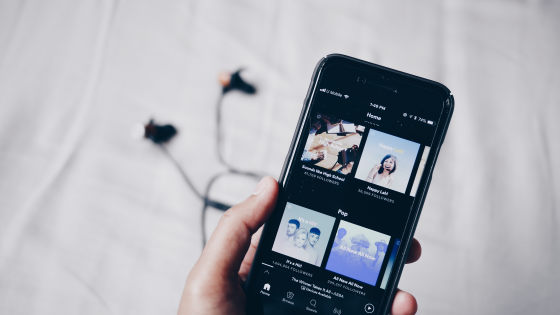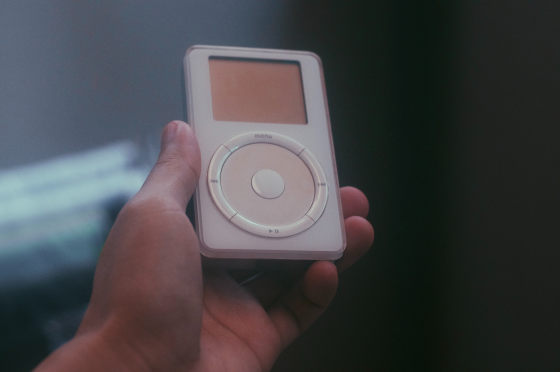15 things that Spotify fundamentally changed the music industry in 15 years Summary

After the medium of records, CDs and MDs, the mainstream of the music industry in 2021
Spotify Turns 15: How the Streaming Giant Has Changed Music - Variety
https://variety.com/2021/digital/news/spotify-turns-15-how-the-streaming-giant-has-changed-and-reinvented-the-music-industry-1234948299/
◆ 01: Decrease in piracy

In the days when music was consumed on CDs, etc., the method of illegally downloading music with
◆ 02: De-gentrification of music
Gentrification is a word translated as 'upscale' or 'enrichment'. Spotify opened a new way for music that had become gentrified.
In the days when CDs were the mainstream, in order to listen to your favorite music, you had to buy an album for several thousand yen, even though you weren't sure if all the songs were to your liking. However, as subscription services spread, it became possible to listen to music of various artists and genres without restrictions just by paying $ 10 (about 1100 yen) a month. It is believed that this has led to the fusion of music that transcends genres, and that the general public has come to prefer a variety of music rather than being fixed in one category.
◆ 03: Establishment of “free viewing layer”

Spotify has a 'free viewing layer' where advertisements are displayed instead of using the service for free. It seems that there was criticism from the beginning to provide the service for free, but Spotify's CEO Daniel Ek thought that thanks to this free audience, 'we can provide beneficial services to paying customers.' .
In fact, this free audience is useful for market research. For example, it seems that the free audience has created a number of 'barbecue-themed playlists', but Spotify analyzes such playlists to 'listen to customers' specific situations. It became possible to find out what music is like. Ad revenue from free viewers is only about 9% of Spotify's total revenue, but it plays an important role in the company's business as a whole.
◆ 04: Invention of 'mood playlist'
Spotify broke the existing music 'genre' wall, but at the same time created a new category of music based on 'mood'.
◆ 05: Automatic playback
Before streaming became mainstream, the concept of 'autoplay' did not exist. This is because the order in which music flows is fixed in media such as CDs. iTunes did have some functionality, but it was limited to 'music in the library created by the user by completing music purchases.'
Streaming services like Spotify, on the other hand, had algorithms suggesting another when one playlist ended, giving viewers access to even more music. In this sense, Spotify is considered the first streaming service to popularize autoplay.
◆ 06: Ended Apple's monopoly

With the introduction of iPod and iTunes, Apple dominated the digital music market, and in 2009 it is said that it monopolized 69% of digital sales of music. But in 2016, streaming service revenue will surpass digital download revenue, ending Apple's monopoly.
Spotify has since remained the top digital music provider, with 34% of streaming music revenue as of Q2 2020.
07: Playlist 'curator' becomes important
Playlist 'curators' have come to play an important role in the success of an artist's music.
◆ 08: Personalized 'music of the year'
As a digital music provider, Spotify was the first in the world to offer a personalized 'music of the year' based on users' listening history in 2015. Apple followed suit and announced a similar feature in 2019.
◆ 09: Lyricist and producer credit function
As music shifted from analog to digital, the names of music-related people such as lyricists, producers, and engineers, whose names had previously appeared on CD jackets, were buried. It was pointed out that this was a big loss for those involved in music.
Although it was behind Apple, Spotify started offering a 'credit display system' for the first time as a streaming service in 2018. Spotify is also creating a playlist focused on songwriters and composers called Songwriters Hub .
◆10: Hate Policy

In 2018, Spotify announced its hateful content policy, involving artists and labels, sparking a big debate in the music world. The announced hate content policy was to exclude ``content that incites hatred or violence against individuals or groups'' from Spotify, but R. Kelly 's music, which has become a problem with sexual abuse, is shut out of the service. , which contained the contradiction that the music of other convicted artists would continue to be offered.
Some artists boycotted Spotify, and eventually Spotify admitted its mistake and withdrew its policy.
◆ 11: So that artists can share 'story'
Spotify was also the first streaming service to offer the ability for artists to record short movies and share them with fans. Similar to Instagram, Twitter, etc., this feature allows artists to easily tell their music 'story' to fans.
◆ 12: A system in which fans donate directly to artists
In April 2020, as the effects of the new coronavirus infection (COVID-19) spread, Spotify released a fundraising function for artists called 'Artist Fundraising Pick'. This made it possible to support artists whose activities were restricted. On the other hand, it is also pointed out that this function is ``a function that implies that artists are not paid enough money''.
◆ 13: Mini video function 'Canvas'

Canvas says , ``Add a short looping visual to each Spotify track to capture the attention of your fans in a new way.This is the album jacket of the streaming era.'' .
According to Spotify data, users who listen to songs on Canvas are 5% more likely to continue listening, 20% more likely to add songs to playlists, and 9% more likely to visit artist profile pages. that's right.
◆ 14: Licensed music for podcasts
In 2019, Spotify announced a new type of playlist called “Your Daily Drive,” a mix of playlists and podcasts. Such a system, which Spotify calls a 'new format,' will make it easier for podcast hosts to host music reviews, radio shows, or meditations.
◆ 15: Controversial targeted advertising
In 2019 Spotify announced a feature called 'Marquee'. Marquee is a targeted advertising tool that allows artists and their teams to target and display sponsored recommendations to highly interested users. Marquee is an advertising system, and Spotify receives a commission each time a user clicks on an ad. The click rate (CTR) is very high at 55%, but there is also criticism that it is similar to Payola , where radio stations received bribes and played music.
Related Posts:
in Web Service, Posted by darkhorse_log







